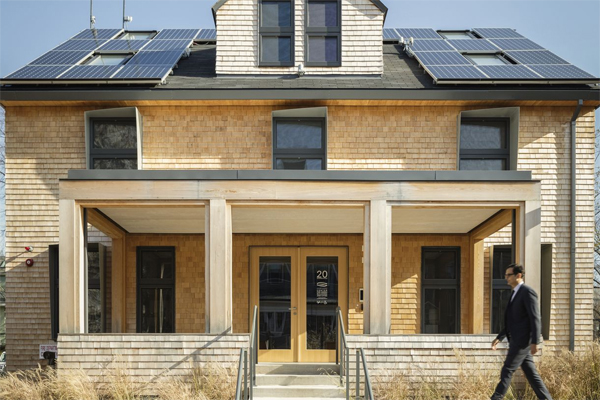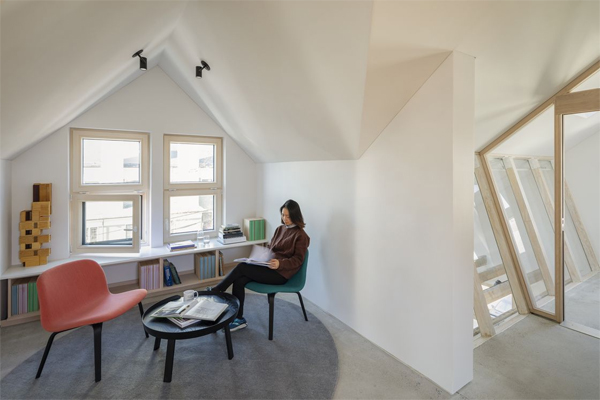A Harvard program to retrofit a campus building and create a living laboratory for energy-efficient architecture officially aims to develop techniques and technologies to make the built world more sustainable. The renovated building was designed by the school’s Center for Green Building and Cities with strict performance targets in mind: nearly zero energy for heating and cooling, zero electric lighting during the day, operating with 100 percent natural ventilation, and producing zero carbon emissions.
“We’re shattering the belief that you need to build new buildings to be efficient,” says Ali Malkawi, a professor of architectural technology. Currently, existing U.S. buildings are responsible for 40 percent of the country’s energy consumption, costing owners more than $230 billion annually for heating, cooling, and power.
The inefficient, aging building needed air conditioning units in the summer and heaters in the winter, and due to its location in an historic district, pinpoint accuracy in its retrofits to meet existing building codes. 
HouseZero rejects the conventional “sealed box” approach in favor of a building that reacts to its environment. The retrofitted home uses extensive daylighting and natural ventilation, augmented by a sophisticated window actuation system that uses software and sensors to adjust, open, and close windows continuously. By working with, instead of fighting, the environment, the project shows how more reactive architecture can sharply cut energy use while increasing comfort. “We wanted the building to breathe,” Malkawi says, “and leaving it open makes it more adaptable.”
Built with an extensive network of hundreds of sensors, HouseZero will provide detailed information about the home’s environment, including minute temperatures fluctuations. The information can then create computational simulations that can be used to develop even more efficient and sustainable structures.
See www.curbed.com to read the original article.

YES! Thank you for posting this!